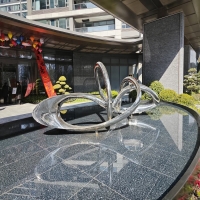Welcome to the website for landscape facilities products and knowledge.
What are the differences between smooth and grooved exterior surfaces?
When choosing materials for exterior surfaces, the texture plays a critical role in both aesthetics and functionality. Smooth and grooved surfaces are two common options, each with distinct characteristics.
Smooth Surfaces:
Smooth exteriors offer a sleek, modern appearance and are easier to clean, making them ideal for contemporary designs. They reflect light uniformly, enhancing brightness. However, they may show scratches or imperfections more easily and can be slippery when wet.
Grooved Surfaces:
Grooved textures provide better traction, reducing slip hazards, and are often used in high-traffic areas. The ridges hide minor flaws and add visual depth. However, they can accumulate dirt and require more maintenance.
Key Differences:
1. Traction: Grooved surfaces are safer in wet conditions.
2. Maintenance: Smooth surfaces are simpler to clean.
3. Aesthetics: Smooth finishes look minimalist, while grooved designs add texture.
4. Durability: Grooves can mask wear and tear better.
Choosing between them depends on the project’s needs—smooth for elegance, grooved for practicality.
Related search:

Recommendation
Abstract art sculpture, stainless steel metal sculpture, large-scale water feature sculpture